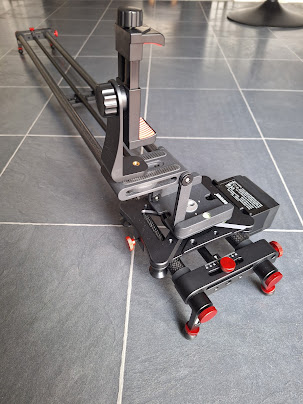Camera sliders are a type of camera mount accessory that allows for smooth, linear, and controlled camera movement along a fixed track. They're essential for capturing professional-looking video footage with dynamic perspectives, especially for filmmakers, photographers, and content creators who want to add a cinematic touch to their work.
Imagine you're watching a captivating movie scene where the camera glides smoothly across a landscape, revealing the majesty of nature, or a dramatic moment where it slowly pushes in to focus on a character's expression. That's the magic of a camera slider at play. These devices provide fluid, steady shots that would otherwise be challenging to achieve manually.
Camera sliders come in various sizes and capacities, from compact models suitable for smartphones and lightweight cameras to heavy-duty ones that can support DSLRs and even small cinema cameras. They are typically made of materials like aluminum or carbon fiber, which are both durable and lightweight, making them easy to transport and set up on location.
The track itself can range from a few inches to several feet in length, and some high-end models offer motorized control for even more precise and complex movements. This motorization allows for time-lapses and tracking shots that would be difficult to achieve manually, adding a touch of automation and sophistication to your filmmaking process.
Using a camera slider can transform static shots into visually engaging ones, enhancing storytelling and creating a sense of depth and motion in your footage. For instance, in a scene where a character is walking towards the camera, a slider shot can make the moment feel more dynamic and immersive. Or, in a product photography setup, a slider can be used to showcase the item from various angles, providing the viewer with a comprehensive look at the product.
In addition to their primary function, camera sliders can be paired with other gear like tripods, fluid heads, and gimbals to create more complex and versatile setups. Some sliders are even designed to be used in conjunction with these accessories for a seamless filming experience.
When choosing a camera slider, consider the weight of your camera, the type of movement you need, the length of the track, and whether you want manual or motorized control. Some sliders come with built-in bearings for a smoother glide, while others may require additional maintenance to ensure they operate quietly and efficiently.
In summary, camera sliders are a fantastic tool for adding motion to your visual storytelling. Whether you're a hobbyist looking to elevate your home videos or a professional in need of high-quality equipment for your next big project, a slider can be an invaluable addition to your camera bag, opening up a world of creative possibilities and helping you capture the perfect shot every time.



No comments:
Post a Comment